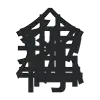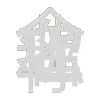Vec and VecDeque
Arrays in rust, similar to Go, are actually very primitive things. Arrays have a known size that can’t be changed. They look like this:
let arr: [i32; 3] = [1, 2, 3]; // A fixed-size array of 3 integers
So, in practice, for list-y stuff we don’t use arrays. We use Vecs, or vectors. These are growable, heap-allocated arrays, good for dynamic stuff like how we’d use arrays in JS or elsewhere. They are also typed, only allowing you to store stuff of type T.
let mut numbers = Vec::new(); // Create an empty vector
numbers.push(1); // Add elements
numbers.push(2);
numbers.push(3);
println!("{:?}", numbers);// Output: [1, 2, 3]
numbers.pop(); // Remove the last element
let guy = numbers.get(1);
println!(guy); // 2
println!("{:?}", numbers); // Output: [1, 2]
You can also create an inline vec on the fly like this:
let numbers = vec![1, 2, 3]; // Create a vector with initial values
println!("{:?}", numbers); // Output: [1, 2, 3]
What about VecDeque?
Rust, being the borderline overengineered megalang that it is, also provides a ring buffer implementation as part of the std lib. Which is cool!
That’s basically what VecDeque is — a double-ended array/list which is implemented as a ring buffer. Double-ended meaning both adding and removing items is quite efficient.
use std::collections::VecDeque;
fn main() {
let mut deque: VecDeque<i32> = VecDeque::new();
deque.push_back(1); // Add to the back
deque.push_front(0); // Add to the front
println!("{:?}", deque); // Output: [0, 1]
deque.pop_front(); // Remove from the front
println!("{:?}", deque); // Output: [1]
}
The VecDeque is slightly more efficient if you need a list for adding and removing from both front and back of the list. Other than that, it’s pretty much the same as Vec.
 Last modified:
Last modified:  Last modified:
Last modified: